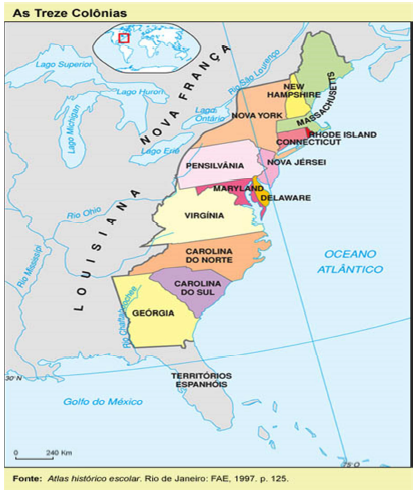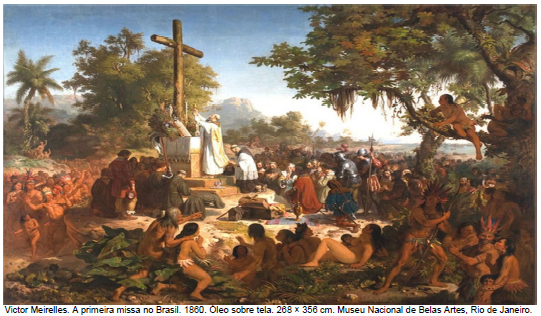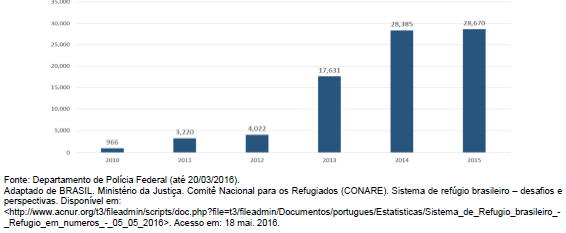Questões de Vestibular PUC - PR 2016 para Vestibular - Primeiro Semestre
Foram encontradas 60 questões
“O ano de 1930 tem grande significado na vida de Prestes; é o momento em que, diante da pressão para que assumisse a liderança do movimento que ficaria conhecido como a “Revolução de 30”, ele rompe com seus antigos companheiros, os “tenentes”, e se posiciona publicamente a favor do programa do Partido Comunista.”
PRESTES, Anita Leocadia. Luiz Carlos Prestes: um comunista brasileiro. São Paulo: Boitempo, 2015.
Presente em diferentes momentos da história do Brasil, Luiz Carlos Prestes tornou-se personagem importante
da República Velha até a Redemocratização. Primeiramente integrante do movimento tenentista,
durante os anos de exílio, após o fim da Coluna Prestes (1925-27), estuda e se aproxima do comunismo,
regressando clandestinamente ao país como líder da Intentona Comunista (1935). Uma tentativa
de revolução que faz parte de um contexto histórico em que podemos afirmar que
“O nascimento dos movimentos de unificação não coincidiu com o nascimento do imperialismo; por volta de 1870, o pan-eslavismo já havia se libertado das vagas e confusas teorias dos eslavófilos, e já em meados do século XIX o sentimento pangermânico era corrente na Áustria. Contudo, somente após a triunfal expansão imperialista das nações ocidentais nos anos 80 cristalizaram-se movimentos, seduzindo a imaginação de camadas mais amplas. As nações da Europa central e oriental, que não tinham possessões coloniais e mal podiam almejar a uma presença no ultramar, decidiram então que “tinham o mesmo direito à expansão que os outros grandes povos e que, se não [lhes] fosse concedida essa possibilidade no além-mar, [seriam] forçadas a fazê-lo na Europa”.
ARENDT, Hannah. Origens do totalitarismo. São Paulo: Companhia das Letras, 2012, p. 314.
Acerca dos movimentos do pan-eslavismo e do pangermanismo, assinale a alternativa CORRETA.
O mapa mostra as Treze colônias inglesas na América do Norte, normalmente divididas entre Norte, de Massachusetts até a Pensilvânia, e sul, a partir de Maryland até a Geórgia. Colonização de iniciativa particular no século XVI, as Treze colônias inglesas mantinham grandes diferenças entre si, sendo as principais entre o Norte e o Sul.

Dentre elas, podemos citar
Leia o texto a seguir.

Presidente Juscelino Kubitschek durante a inauguração de Brasília em 21 de abril de 1960. Disponível em: http://historiacsd.blogspot.com.br/2012/10/1956-1961-o-governo-jk-esse-episodio.html Acesso em: 03 junho 2016.
Apesar da desconfiança de que não seria terminada, a nova capital federal foi inaugurada em 1960 por
um sorridente Juscelino Kubitschek. Entregar Brasília foi uma questão de honra diante das dificuldades
enfrentadas para erguer uma cidade do zero em três anos. A construção de uma nova capital era ideia
antiga, mas foi levada a cabo como parte do chamado Plano de Metas, que tinha como objetivo principal
Leia o texto a seguir.

A primeira missa no Brasil é um momento emblemático do início da colonização portuguesa na América,
celebrada poucos dias após a chegada e desembarque dos portugueses na costa brasileira, imortalizada
pela narrativa na Carta de Pero Vaz de Caminha e no óleo sobre tela de Victor Meirelles. A ocupação de
fato demorou um pouco mais a acontecer, dentre as razões para seu início, temos
Leia o texto a seguir.
O volume das águas oceânicas é 15 vezes o volume das terras acima do nível do mar, de modo que se todas essas terras fossem lançadas ao mar, o nível dos oceanos se elevaria de 200 e poucos metros.
- E se as terras abaixo do mar se nivelassem com as terras acima do mar, que aconteceria?
- É uma coisa já calculada. As águas do oceano cobririam a terra inteira com profundidade de 2 quilômetros e meio.
- Para mim é o que vai acontecer - disse Narizinho. A erosão, com sua mania de desmontar as terras altas para ir aterrando o fundo dos mares, acabará nivelando tudo que é terra, - e então, adeus humanidade!...
- Bom - disse Dona Benta. Essas hipóteses poderão suceder daqui a tantos milhões de anos que não vale a pena pensar nelas.
Fonte: Monteiro Lobato - Serões de Dona Benta.
O conhecimento geológico permite afirmar que a hipótese levantada por Narizinho é

Em 2013, a investigação científica da doutoranda Angeline Martini, Dr.ª Daniela Biondi e Dr. Antonio Carlos Batista comparou os valores máximos e mínimos das variáveis meteorológicas (temperatura, umidade do ar e velocidades dos ventos) entre ruas arborizadas e sem arborização na cidade de Curitiba.
Para isso, foram selecionadas três amostras (Alto da XV, Hugo Lange e Bacacheri) contendo um trecho de rua com e outro sem arborização:

A figura a seguir demonstra uma das variáveis quantificadas.


Analise o gráfico a seguir.
Solicitações de refúgio - Brasil
(entradas por ano, 2010-2015)

Read the text and choose the CORRECT option.
Portable devices
Buddy, can you spare a watt?
Trading power could free users from dead-battery tyranny
ONE of the most annoying features of smartphones is that they run out of power just when you need it most. After a day of e-mailing, streaming music, downloading podcasts, watching cat videos and snapping selfies, a device can easily be left without enough charge to make an emergency call. What would help, reckons Paul Worgan of the University of Bristol, in England, is to give portable devices the ability to share some of their power.
Mr Worgan and his colleagues have come up with a wireless-charging system which they call PowerShake. To use it someone holds a phone with an expiring battery against another device—a phone, or even a smartwatch or a fitness band—and this initiates a power transfer from one to the other. Some 12 seconds of contact provides enough juice to make a one-minute telephone call. One minute of contact would allow, say, a four minute music video to be watched. The researchers will present their idea to CHI2016, a conference on computer-human interaction, in San Jose, California, in May.
Available in:<http://www.economist.com/news/science-and-technology/21697800-trading-power-could-free-users-dead-batterytyranny-buddy-can-you-spare>
I. New smartphones will have power to spare.
II. PowerShake wireless-charging system will help you to charge your out of power smartphone.
III. You have to plug in both phones for 12 seconds.
IV. This new feature will allow you to make a short phone call.
V. The researchers will present this new idea at their university, in San Jose, California.
Read the text.
Amazon keeps expanding its empire
Elizabeth Weise
Amazon has doubled the number of air freight cargo planes it is leasing, a further build out of its internal delivery system.
Atlas Air Worldwide on Thursday said it had signed an agreement with the Seattle internet retailer to operate 20 Boeing 767 for the company for ten years.
Operations under the agreements are expected to begin in the second half of 2016 and ramp up to full service through 2018, Atlas said.
In addition, Amazon will acquire as much as 20% of Atlas.
The planes will be used to move packages between Amazon’s fulfillment centers, which package goods, to its sortation centers, which sort them into local delivery pallets that can be taken to the Post Office for bulk delivery, the company said.
The planes will also be used by Amazon to move goods between its fulfillment centers across the country to other centers where they are needed for one- and two-day delivery, as no one Amazon center can stock the 20 million items Amazon typically has available for two-day delivery.
The deal isn't surprising, said John Haber, CEO of Spend Management Experts, a supply chain management consulting firm.
“This is just the most recent step in Amazon building out a massive logistics network designed to move more of their transportation and distribution under their direct control," he said.
Available in:<http://www.usatoday.com/story/tech/2016/05/06/amazon-further-builds-out-air-freight-network/84035574/>
.
What does the title of the text mean?
Dreaming brain rhythms lock in memories
It is the clearest evidence to date that REM sleep is critical for memory. By switching off certain brain cells, the researchers silenced a particular, rhythmic type of brain function - without waking the mice. If they did this during REM sleep, the mice failed subsequent memory tests. The research is reported in the journal Science.
REM sleep is the phase during which, at least in humans, dreams take place - but the question of whether it is important for settling new memories has been difficult to answer. Recent studies have tended to focus on deep, non-REM sleep instead, during which brain cells fire in various patterns that reflect memory consolidation and "re-play" of the day's experiences. During REM sleep, while our eyes flicker and our muscles relax, exactly what the brain is doing is something of a mystery. But it is a type of sleep seen across the animal kingdom, in mammals and birds and even lizards.According to the strip the expression ‘I stand corrected’ means:

What does this text aim to?
Zika virus makes Rio Olympics a threat in Brazil and abroad, health expert says
Amir Attaran calls for postponement or moving of Games and says biggest risk is spreading the virus to countries without adequate healthcare infrastructure.
As Brazil reels from a spiraling political crisis and its deepest recession in decades, a public health specialist in Canada has added to the country’s woes with a high-profile call for the 2016 summer Olympics – slated to kick off in Rio de Janeiro in early August – to be postponed or moved due to the Zika outbreak. Speaking to the Guardian on Thursday, Attaran described the idea of going ahead with the games as both “indescribably foolish” and “monstrously unethical”. The potential risks to visitors range from braindamaged children to death in rare instances, he added. “Is this what the Olympics stand for?”
Adapted from: http://www.theguardian.com/world/2016/may/12/rio-olympics-zika-amir-attaran-public-health-threat
According to the text, it is CORRECT to state that
Improving with age? How city design is adapting to older populations
There is no denying it: like it or not we are all getting older. According to the UN World Population Prospects
report, the global population of older people is growing at an unprecedented rate. By 2050, for the
first time in human history, there will be more over-65s than children under 15. The number of people over
100 will increase by 1,000%. And as by then 70% of the world’s population will likely live in cites, this will
present huge challenges, and cities will need to adapt. “Small innovations can make a difference,” Recalcati
adds. “Older people are less likely to drive, favouring public transport and walking. The average person
over 65 manages a walking speed of 3km/hour. At 80 that goes down to 2km/hour, compared with the
average for a working age person of 4.8km/hour. Reducing the distance between transport stops, shops,
benches, trees for shade, public toilets and improving pavements and allowing more time to cross the
road all encourage older people to go out.” In the UK, the government has just announced the building
of 10 new towns designed to address ageing and health issues such as obesity. As well as encouraging
more active lifestyles, the designs could include wider pavements, few trip hazards and moving LCD
signs, making the streets easier to navigate for people with dementia and other age-related conditions.
London-based charity Living Streets has also been working alongside communities carrying out street
audits with older residents to see what improvements could be made, as well as campaigning at a strategic
level to influence positive legislative and infrastructure changes. Their project Time to Cross campaigned
to increase pedestrian crossing times which resulted in Transport for London (TfL) agreeing to a
review.
www.thegardian.com/cities/2016/ap/25/improving-with-age-how-city-design-is-adapting-to-older-populations.
I. Old people walk slowly, so they prefer driving.
II. The adaptions mentioned refer not only to elderly but also to obese people.
III. Population is helping to make improvements.
IV. US Policy makers think elderly people should move to smaller cities.
V. There will be more adults than children by 2050.